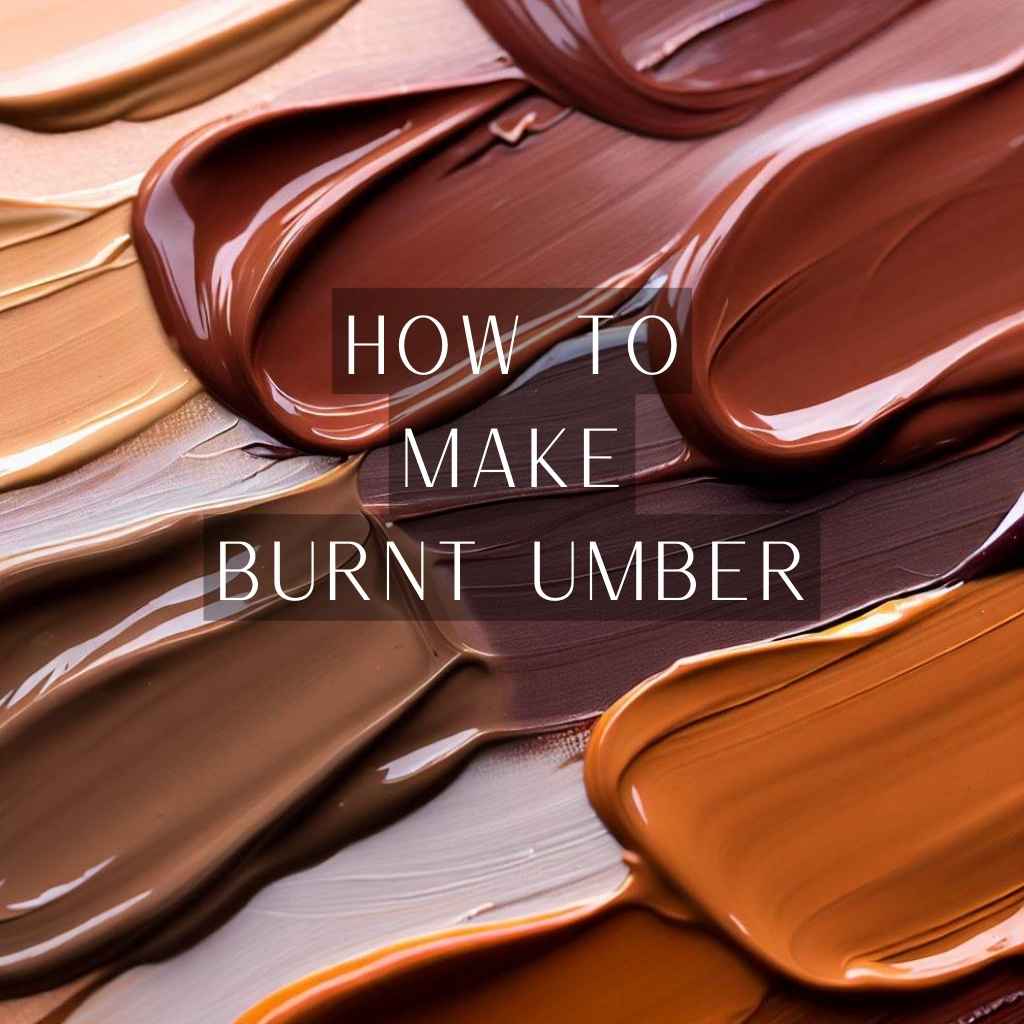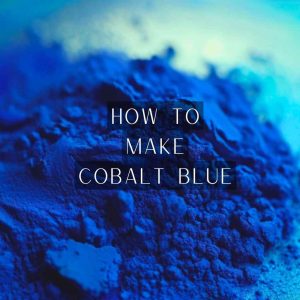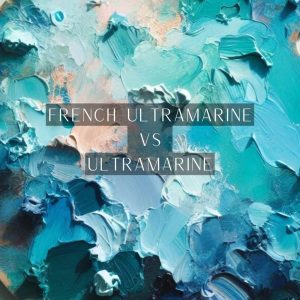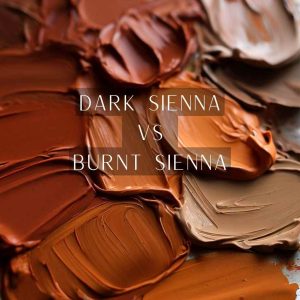Have you ever wondered about how to make burnt umber and the magic it holds? It’s more than just a color; it’s a gateway to intricate depths and captivating textures that can transform your artwork.
The allure of burnt umber is rooted in its history, where artists of old recognized its ability to infuse life into their creations.
In this exploration, we’ll unravel the science, the technique, and the secrets that make burnt umber a timeless treasure for artists across mediums.
Prepare to be captivated by the magic that unfolds when pigments unite, igniting a spectrum of possibilities that transcend the canvas.
What is Burnt Umber?
Burnt Umber, with its name derived from the Latin word “umbra” meaning shadow, has been used by artists for centuries. It finds its origins in the earth itself, as it’s composed of natural iron oxide and manganese oxide.
The pigment is often sourced from the rich soil of regions like Cyprus, Umbria in Italy, and the forests of North America.
What sets Burnt Umber apart is its inherent warmth and depth. With a range of hues from warm reddish-browns to cooler, almost gray undertones, Burnt Umber carries a unique versatility that makes it indispensable in an artist’s palette.
Its granulating texture adds tactile interest, inviting both visual and sensory exploration into your artwork.
How to Make Burnt Umber by Mixing Colors?
The quest to master how to make burnt umber isn’t just about mixing colors; it’s about understanding the color theory behind a hue that has mesmerized artists for centuries.
Creating the rich and earthy hue of Burnt Umber through color mixing is a skill that can significantly enhance your artistic toolkit. This versatile pigment holds the power to add depth, warmth, and character to your artwork, making it a valuable addition to any artist’s repertoire.
Materials Needed:
To create burnt umber by mixing colors, you’d need-
- Red Pigment ( like crimson or deep red)
- Yellow Pigment
- Blue Pigment ( like ultramarine blue)
- Palette
- Palette Knife or Paintbrush for mixing colors
- Water or Medium
How to Make Burnt Umber by Mixing Colors: Step-by-Step Guide
Mastering the process of creating Burnt Umber through color mixing, you not only gain the ability to craft this unique shade but also open up a world of creative possibilities for customizing your palette-
- Begin with Red Pigment: Squeeze a small amount of red pigment into the palette. This vibrant red serves as the foundational element for your Burnt Umber mixture.
- Add Yellow Pigment: Introduce a smaller amount of yellow pigment. Yellow pigments with earthy undertones, like yellow ochre or raw sienna, add warmth and balance to the mix.
- Incorporate Blue Pigment: To achieve the depth and complexity characteristic of Burnt Umber, add an even smaller portion of blue pigment to the mix.
The deep, rich tones of ultramarine blue contribute subtle coolness and enhance the overall richness of the color blend.
- Mixing the Colors: Armed with your paintbrush or palette knife, delicately blend the red, yellow, and blue pigments together. Begin by incorporating a small amount of blue pigment, then gradually adjust the ratios to achieve your desired Burnt Umber shade.
- Observation and Adjustment: As you mix the pigments, carefully observe the evolving color. Burnt Umber should manifest as a deep, warm brown with nuanced undertones.
Throughout this blending process, maintain the perspective that a little blue pigment goes a long way in achieving the desired outcome.
- Test and Refine: Before confidently applying your freshly mixed Burnt Umber to your artwork, conduct a test by applying it to a spare piece of paper or canvas.
This step allows you to evaluate the color’s accuracy and make any necessary adjustments before committing to your work.
- Fine-tuning: If the initial mixture doesn’t precisely align with your vision, embrace the opportunity for fine-tuning. Gradually add more of any of the three pigments—red, yellow, or blue—to your mixture until you achieve the Burnt Umber shade that resonates with your artistic intent.
How to Make Burnt Umber: Traditional Method
The traditional method of creating Burnt Umber is a journey steeped in artistry and technique. This time-honored approach allows you to craft this captivating pigment from scratch, infusing your artwork with its warm, earthy allure.
Materials You’ll Need
To create burnt umber, you’ll require-
- Raw umber pigment
- Baking trays or containers
- An oven or suitable heat source
- Grinding tools to achieve the desired texture.
How to Make Burnt Umber: Step-by-step guide
The traditional method of creating Burnt Umber demands a blend of technical precision and creative intuition. Here is how to make burnt umber using the traditional method-
- Grinding Raw Umber: Begin by grinding the raw umber pigment. This process not only breaks down larger particles but also imparts the desired texture to the pigment.
- Distributing on Trays: Spread the ground pigment evenly on baking trays or in containers. Uniform thickness ensures consistent heating and color transformation.
- The Heating Process: Place the trays in an oven or over a heat source, and subject the pigment to controlled heating. The combination of heat and oxidation triggers the crucial color shift.
- Monitoring Oxidation: Keep a keen eye on the pigment as it heats. The color transformation from raw umber’s earthy tones to burnt umber’s rich browns is a captivating sight.
- Cooling and Testing: Once heated, allow the pigment to cool. Test its stability by blending it with a medium or applying it to a surface. This step ensures your homemade burnt umber is ready for artistic endeavors.
Mixing Burnt Umber with Different Mediums: Binding Agents
Burnt Umber can be mixed with various mediums, such as water, oil, and acrylics, to create different types of paint. Each medium’s binding agent brings its unique characteristics to the final artwork.
Making Burnt Umber Oil Paint
For those who prefer oil painting, combining burnt umber with linseed oil is a classic method to create oil paint. Linseed oil is a traditional binder used in oil painting to create oil paint.
Mixing burnt umber with linseed oil requires patience and skill to achieve the perfect consistency. Artists can experiment with different ratios to find the balance that suits their painting style.
Preparing Burnt Umber Watercolor with Gum Arabic
Gum Arabic is a crucial component in creating watercolor paint and combining gum Arabic burnt umber results in watercolor with excellent flow and transparency.
Artists can experiment with different proportions to achieve their desired effects.
Mixing Burnt Umber with Acrylic Mediums
Burnt umber can be mixed with various acrylic mediums to create a custom paint palette like flow medium, matte medium, gel medium. Each medium affects the paint’s texture, drying time, and opacity.
By experimenting with different mixtures, artists can unlock the full potential of burnt umber in their acrylic artworks.
FAQs
- Can I use Burnt Umber as an underpainting or base layer?
Absolutely! Burnt Umber’s natural warmth and depth make it an excellent choice for underpainting or as a base layer. It can enhance the subsequent layers of colors and contribute to the overall harmony of your artwork.
- Is it possible to create a more transparent or opaque Burnt Umber?
Yes, you can influence the opacity of your Burnt Umber mixture. For greater transparency, use less opaque pigments. To increase opacity, use slightly more opaque pigments and limit the influence of transparent mediums.
- Can I use my custom-mixed Burnt Umber in all mediums?
Yes, once you’ve mastered the process, your custom-mixed Burnt Umber can be used in various mediums such as oils, acrylics, watercolors, and more. Just ensure that the binding agents and mediums you use are compatible.
- What if my Burnt Umber mixture turns out too red or too yellow?
Achieving the perfect Burnt Umber shade requires experimentation. If your mixture is too red, add more yellow incrementally, and vice versa. Patience and small adjustments will help you achieve the desired result.
- Can I mix Burnt Umber with white to create lighter shades?
Mixing Burnt Umber with white pigment will create a range of warm, light brown shades. This can be useful for highlighting and creating subtle variations in tone, especially when depicting light and shadow in your artwork.
- Can I mix Burnt Umber with black to achieve a darker shade?
While you can mix Burnt Umber with black to achieve a darker color, be cautious as this combination can result in a loss of vibrancy. Instead, consider experimenting with deep blues or browns to maintain richness.
Conclusion
As we draw our creative exploration to a close, it’s impossible to ignore the profound impact that understanding how to make burnt umber has on your artistic toolkit.
This earthy pigment, born from the fusion of colors and the dance of temperatures, carries with it the ability to imbue your artwork with a warmth that speaks to the soul.
As your brushstrokes give life to landscapes, portraits, and narratives, you harness the power of tradition and innovation, ancient techniques and modern mastery.
So, take this newfound wisdom and let it be the cornerstone of your artistry. With each stroke, you conjure the essence of Burnt Umber’s history, its depth, and its timeless allure.





